How To Soundproof a Pocket Door? {7 Proven Ways}
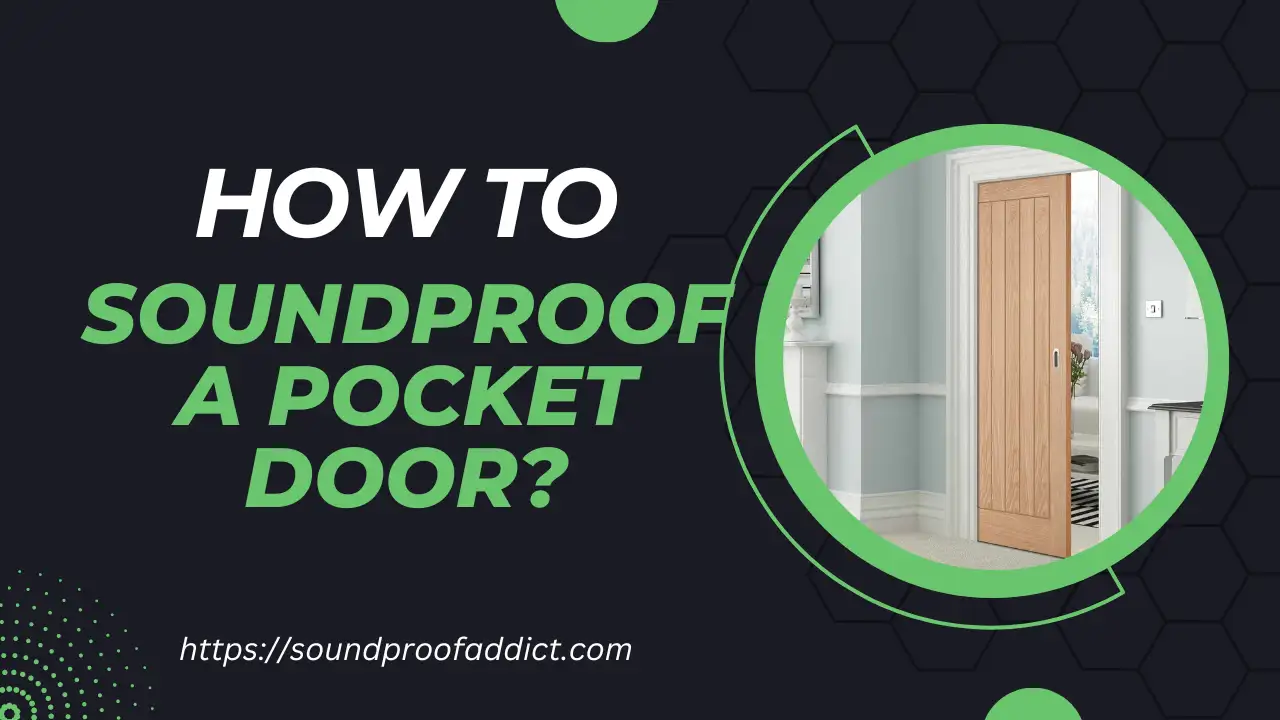
Are you looking for ways to soundproof your pocket door? Soundproofing a pocket door might sound like a bit of a challenge.
Many people struggle with noise coming through their pocket doors, and it can be an annoying distraction. I have experienced it personally and you may have too.
But don’t worry, this post is addicted to the sound insulate a pocket door. In today’s post, I am going to give you 7 impactful techniques to soundproof a pocket door.
The techniques that I am about to give you are tried and tested and I used the same techniques to acoustically insulate my pocket door in my workroom. So, no more waiting – let’s jump right in.
Do pocket door blocks sound?
Well, there is a bit of back-and-forth about this topic. In my opinion, pocket doors do help block sound to some extent when they are closed.
I have a pocket door in my house, I put it to test how much noise it can reduce and I notice a noise reduction of 13 db.
While I know it’s not a massive reduction, it did make a difference in cutting down the noise level.
5 Ways to soundproof a pocket door
1: Seal the gaps at the bottom
Sealing up the bottom part of your pocket door is a crucial starting point when you want to keep noise out. No matter whether you are soundproofing a louvered door or soundproofing sliding glass doors, hollow door, you need to seal gaps you see.
You have already heard it a millions times that- sound can pass even through tiny openings and yes it is true. So our main goal here is to block gaps and openings that could allow sound to pass through.
The most popular solution for sealing these gaps between the door and the floor is to install a door sweep. You may also have heard about it.
It is basically a strip made of flexible materials that hangs down from the bottom of the door. For pocket doors, your best bet is a brush door sweep.
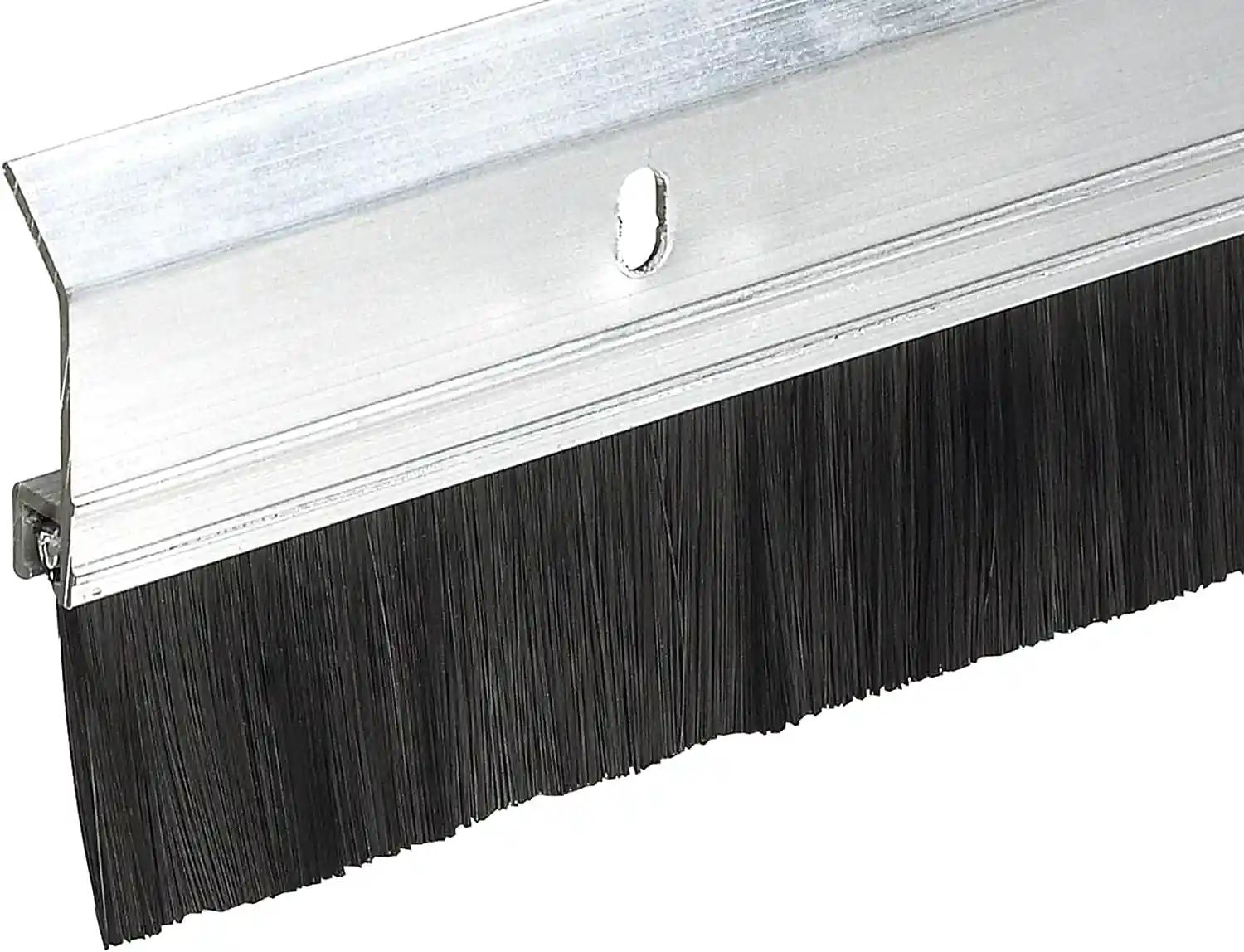
It is super easy to install. If it’s an adhesive type, you peel off the backing and stick it to the bottom edge of the door.
If it’s a screw-on type, you’ll need a screwdriver to attach it. A heavy duty brush door sweep may cost you anywhere between $10 to $30.
2: Use sound-absorbing curtains
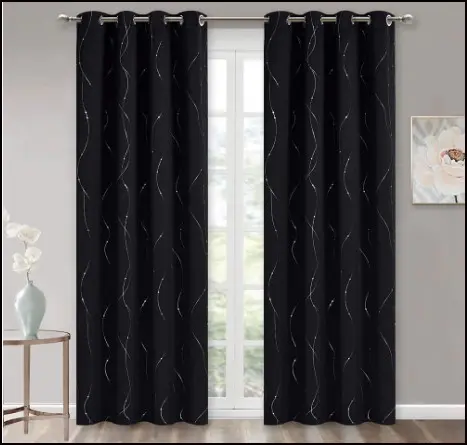
Sound-absorbing curtains are special curtains intended to reduce the amount of sound that travels through. It is an effective way to noise proof a pocket door. They are versatile, you can also use it for noise proof your barn door, for soundproofing inside door and also for soundproofing toilet door and any door.
Sound-absorbing curtains are made with dense and fibrous materials that soak up sound waves. As mentioned by IndowWindows.com, soundproof curtains are incredibly effective for sound-deadening applications.
To give you a clearer picture, in our test, we found that a sound-absorbing curtain can bring down the noise level by a significant 29 decibels (dB). (Read the full article)
While they do a great job at tackling high-frequency noise, however, their effectiveness might not be as strong at reducing low-frequency sounds. To use it, all you have to do is just purchase a curtain that is designed to reduce noise.
If you want to be confused about finding one, then I will refer to our list of best curtains that reduce the noise effectively.
Once you get it, simply hang it on your pocket door the same way you would hang any regular curtain. It is super easy to do. So ahead use these sound-absorbing curtains and enjoy a quieter pocket door.
3: Seal the Edges
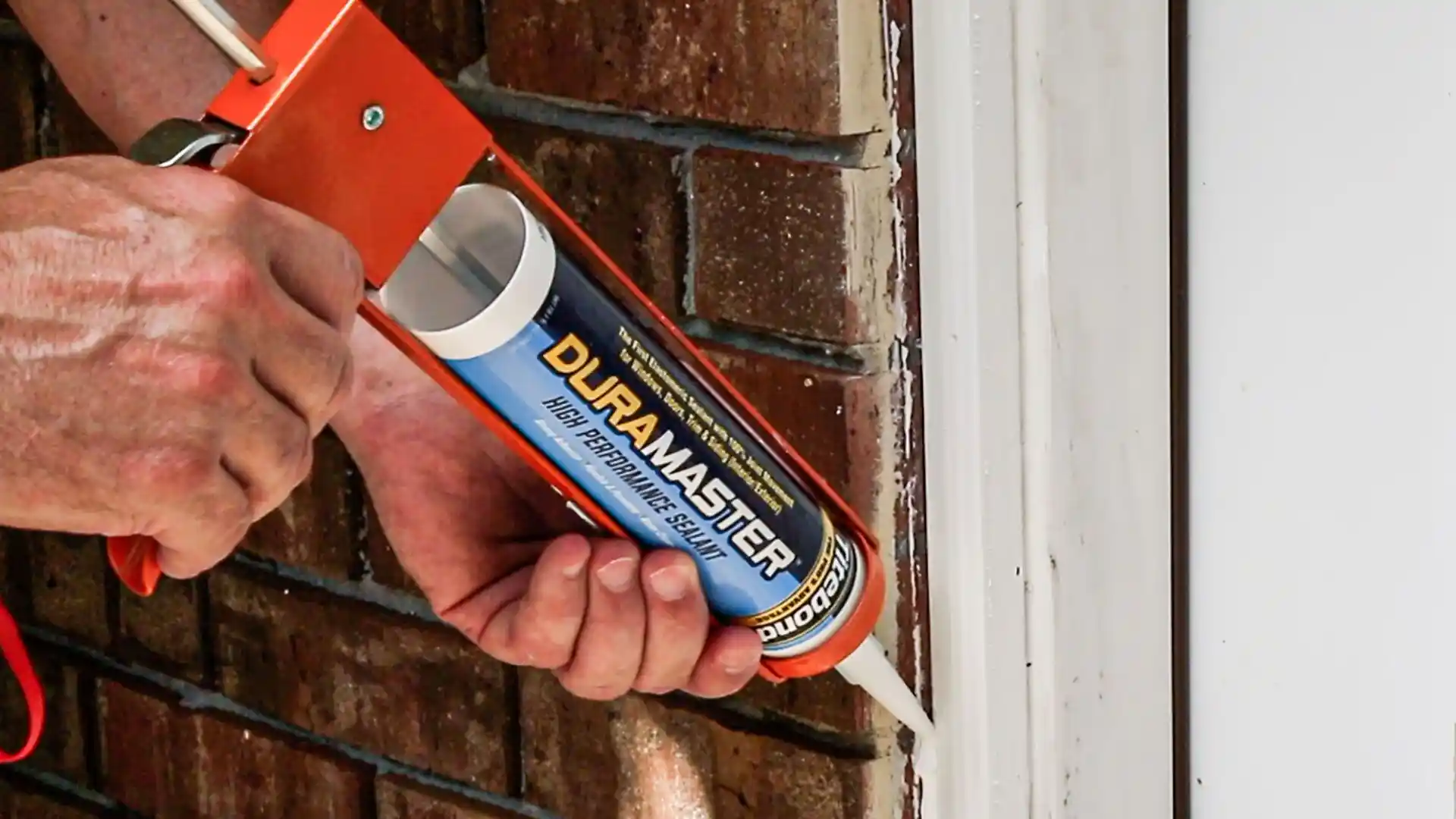
Sealing the edges of a pocket door is also important if you are on a mission to soundproof your door effectively.
But why is it important? Well, when you close your pocket door, you want to make sure there are no spaces where sound can enter through.
By sealing the edges of the door, you’re stopping sound from slipping out or getting in through those gaps. Think of it like zipping up a jacket to keep the cold air out.
To seal the edges, you use weatherstripping, it is soft and flexible and comes in strips or rolls. It has an adhesive on one side that sticks to the door frame.
There are many weatherstrips in the market, but the one I would recommend is one that is made up of silicon as they are more durable than others.
Most weatherstripping has adhesive backing, so to install them, all you need to do is just peel off the paper and stick it to the door frame. Easy-peasy!
Related post: How does sound travel through a French door?
4: Hang a soundproofing blanket
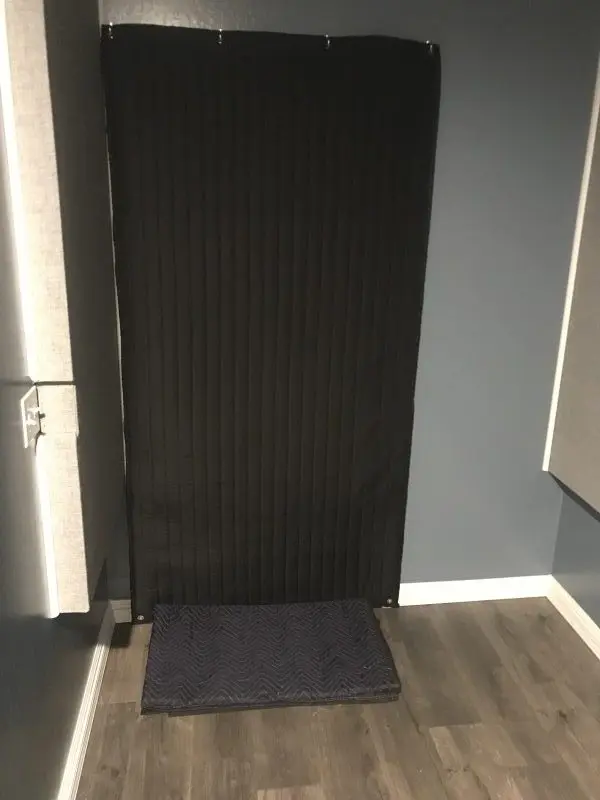
Hanging a soundproofing blanket is an effective and non-permanent method for enhancing the sound insulation of a pocket door and sliding door. These blankets, also known as acoustic blankets, are designed to absorb and dampen sound.
They are typically made from materials like fiberglass, mineral wool, or dense fabrics, all of which help dampen noise.
Hanging an acoustic blanket is easy AF. Most blankets come with grommets or attachment points along the top edge, allowing them to be hung from hooks or rods.
This makes it easier to put up and take down as needed just like curtains. For these reasons, this is a perfect choice for renters (like me 😊) or those who want a non-permanent solution to soundproof a pocket door.
They are budget-friendly as well and have a neutral and unobtrusive appearance. Now, let’s talk about how effective they are. A high-quality soundproofing blanket can potentially reduce noise levels by around 10 to 20 dB.
This reduction can be more noticeable for certain types of sounds, like the mid-range frequencies. However, it might not have as much of an impact on low-frequency sounds (like deep bass) or high-pitched noises.
To maximize the noise reduction of a soundproofing blanket, consider combining it with other soundproofing measures such as weather-stripping, sealing gaps, and addressing structural weaknesses.
Learn more: About soundproofing blankets
5: Replace the door with a soundproof one
A standard pocket door might not offer the same level of soundproofing as a door that is designed with in mind to soundproof. Replacing the door with a soundproof one is a direct and most effective way to block sound transmission.
A soundproof door is usually made up of high-density materials that provide a strong noise resistance.
They often have a solid, dense core that helps absorb and block sound well. They might consist of multiple layers of materials, and each designed to counteract different sound frequencies.
Good quality soundproof doors have excellent sealing systems that minimize gaps and cracks through which sound can escape and even some doors have built-in acoustic insulation to further enhance their sound-blocking capabilities.
When choosing a soundproof door, look for a door with the Sound Transmission Class (STC) rating, which measures how well a door blocks sound.
“A higher STC rating indicates better soundproofing.”
According to TruStileDoors, doors with 30-40 STC rating are good at reducing sound and doors with STC rating between 40-50 are very good. So you should look for a door with STC having 40 or more. This is the crucial factor you have to look at while buying a soundproof door.
Now, bear in mind that installing a soundproof door is a bit more intricate than a regular door due to its weight and thickness. It’s recommended to hire a professional to ensure proper installation. This might involve adjusting the door frame, hinges, and hardware to accommodate the new door.
The cost of replacing a standard pocket door with a soundproof door relies heavily on the type of door you choose, installation fees, and any additional features you opt for can also add to the total.
For a standard interior soundproof door, it can cost you anywhere from $500 to $2,000 or more. Just to give you a specific example, an Eclisse acoustic pocket door is currently priced at $2170, which is super costly but the door is also well soundproofed. (Read: A comprehensive guide to soundproof door cost)
How to make a pocket door quieter?
Alright, so you’ve done the soundproofing for your pocket door – great job! Now, let’s dive into how you can make it even quieter.
1: Use soft-close mechanism
The first and the most effective way to make a pocket door quieter is to use Soft-Close Mechanism. Don’t let the name fool you; it’s not as fancy as it sounds.
A soft-close mechanism is a special hardware device designed to make doors, including pocket doors, close slowly and gently, preventing them from slamming shut. It adds a touch of smoothness and quietness to how the door moves.
The mechanism typically consists of a set of components that attach to the top of the pocket door. When you push the door to close it, the mechanism activates.
It uses special hinges or springs to slow down the door’s movement as it gets closer to being fully closed. This controlled slowing prevents the door from hitting the frame with force.
Learn: What are the soundproofing techniques for a condo door?
2: Use Silent Guides and Rollers for Pocket Doors
Silent guides and rollers are special hardware components that make the movement of a pocket door smoother and quieter as well.
Regular guides and rollers can sometimes create noise when the door moves within the pocket or along the track.
However, silent guides and rollers are engineered to minimize these noises by reducing friction and vibration as the door moves.
This means when you open or close the door, it glides along the track without making those typical scraping or rattling sounds. You may have already experienced these types of noise.
Installing silent guides and rollers is usually not too complicated. Many kits come with detailed instructions. You’ll need to remove the existing guides and rollers from the door and replace them with the silent ones.
This might require unscrewing or detaching the old parts and attaching the new ones in their place. If you’re a bit of a DIY enthusiast, you could totally tackle this on your own. But if you are unsure then you should hire a pro.
Related: How to soundproof roll up garage door?
Conclusion
Pocket door does not block out sound that well and allows a lot of sound that can make you crazy. I’ve shared 5 proven techniques to help you soundproof your pocket door effectively.
Just to recap, here are that 5 tried-and-true techniques:
- Seal the Gaps: Block sound by installing a door sweep at the bottom of your pocket door, using a brush door sweep for best results.
- Sound-Absorbing Curtains: Hang a curtain that is designed to reduce noise. A top-notch soundproofing curtains can reduce the sound levels by up to 29 dB.
- Seal the Edges: Use weatherstripping to close gaps around the edges of the pocket door, to sound leaks.
- Soundproofing Blanket: Hang an acoustic blanket made from dense fabrics to reduce noise by 10 to 20 dB.
- Upgrade the Door: For a more direct solution, consider replacing your standard pocket door with a soundproof pocket door. I would recommend you Eclisse acoustic pocket door, if it fits your budget.
Now, if you’re looking to not only soundproof but also make your pocket door quieter, you can attach a Soft-Close Mechanism. This device adds a touch of smoothness and quietness to the door’s movement and prevents the door from forceful slamming.
To make your door even more quieter, you can opt for Silent Guides and Rollers to minimize friction and vibration.
By using these techniques , you can reduce the noise through your pocket door to a great extent and make your room a lot more peaceful.
Next to read: Are bifold doors soundproof?
